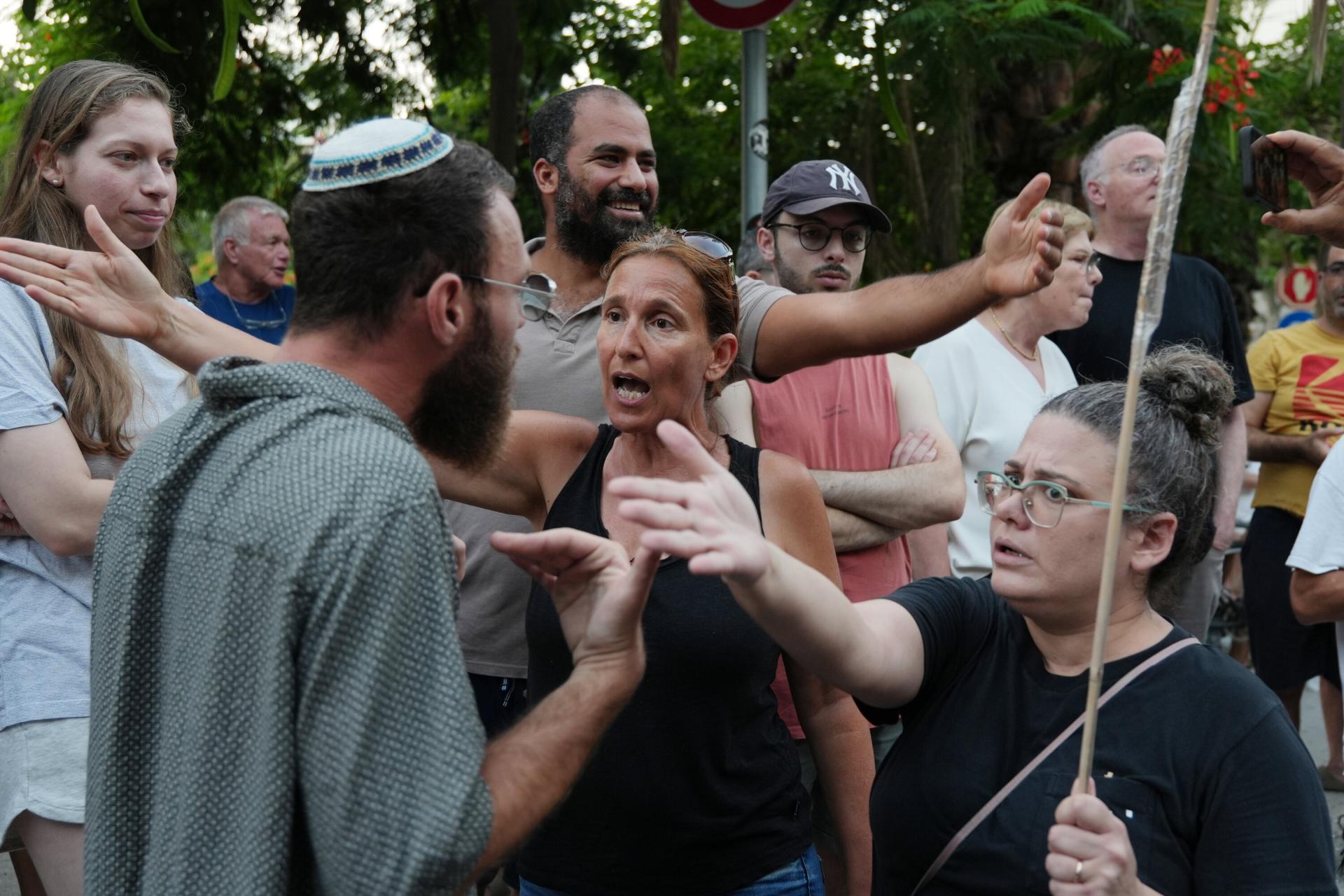Tel Aviv's Yom Kippur Struggle Could Have Been Avoided
The judicial overhaul is forcing Jewish Israelis to choose to identify, in an almost dichotomic manner with one of two camps. As they clash, the real loser is our unifying, complex, diverse, and open Jewish identity.

Photo: Lior Segev
The tale is told of a Jew in Canada who was given a citation by the municipality for the sukkah he built ahead of Sukkot, because it was an illegal structure that contravened the regulations. The following day he was summoned to court. The judge, who was also Jewish, ruled that the municipality was correct and that the man would have to dismantle the sukkah, and gave him eight days—the length of Sukkot—to do so.
This story hinges on the wit of the judge, who was able to walk the line between two worlds and ensure that the municipal regulations were respected while also enabling the fulfillment of the commandments of Sukkot. It is a pity that the leaders of Israel in 2023 do not share the same practical wisdom of this apocryphal Canadian justice.
On Yom Kippur we witnessed painful scenes of a struggle over public space in Israel, with the principal victim being the right to pray in public. This unnecessary clash could have been prevented with a little more sensitivity and forethought.
The first objection to be made is against the Tel Aviv municipality, which allows various kinds of events to be held in its public spaces but excludes traditional Jewish prayer. Such prayer also has a place in public spaces, which are meant to serve the needs of all the population groups in the city, whether religious or secular, Arab or Jewish, foreign workers or citizens, straight or LGBTQ. Why not take the approach of the Canadian judge and find a compromise in terms of place (such as restricting the type of partition used between men and women, or its height, thickness, or positioning) or time (restricting hours for such prayer), as a proportional way of balancing freedom of religion against the values of equality and freedom of movement? Why not take such simple steps in order to prevent confrontations that could kill off the few common sacred values that remain in Israel's Jewish society, with its various divisions and tribes?
The second objection should be directed against the national religious and ultra-Orthodox public that began this conflict: How can they prevent diverse forms of prayer at the Western Wall on the one hand, such as women praying with a Torah scroll in the women’s section or the renovation of a “general prayer area” beneath Robinson’s Arch for non-segregated prayer, and on the other, demand the right to hold segregated prayers in the heart of Tel Aviv? If public space is to become the setting for such conflicts, then those who are discriminated against in certain spaces can hardly be expected to remain neutral in others.
The result of all this is a snowball of civil battles—from the deliberate opening of restaurants on the Tisha B'Av fast day, through battles over pluralist religious education in secular schools to prayer in public spaces on Yom Kippur. This snowball will just keep on rolling.
The public struggle against the government’s judicial overhaul focuses on concerns about the democratic character of the State of Israel. But alongside these worries, we should also be deeply troubled by the damage caused by this legislation to the state’s Jewish character. The overhaul, which is provoking huge social tensions, is forcing Jewish Israelis to choose to identify, in an almost dichotomic manner, with one of two camps—the religious right-wing camp that supports the overhaul, or the secular liberal camp that supports the separation of powers. As these two camps clash and grind away at each other, the real loser is our unifying, complex, diverse, and open Jewish identity.
If only the ultra-Orthodox or national religious have sovereignty over Judaism in public spaces, and only they possess the “truth,” then the unavoidable consequence will be that many people distance themselves from Judaism and become unwilling to find their own place within it. Our Jewish heritage can only be appreciated if it is accessed willingly and freely. This is the only way for Judaism to become once again a unifying force for Jewish communities everywhere, whatever their diverse values and lifestyles.
Even more serious, if Judaism ceases to be a moral voice, and instead is represented by the recent extremist and Kahanist statements that a convicted murderer is a holy righteous person because his victims were Arab, then what do we have left to say in our defense? If hundreds of rabbis from the national religious community decide that of all the hunger, suffering, and corruption in this world, the cause they choose to stand up for is that of a murderer and his prison conditions, then how can we expect to expand the circle of Judaism? How can we ensure that our sons and daughters remain connected to the tradition of their mothers and fathers?
In synagogue, the person who is to lead the prayers on Yom Kippur must be someone who is “part of the community.” He must stand before the congregation “trembling with fear,” aware of his own weaknesses and limitations, aspiring to faithfully represent the congregants in supplication, and pray that “I shall not shame them and they shall not shame me.” After this year’s Yom Kippur, let us hope that our leaders outside the synagogue, from both sides of the aisle and all segments of society, whether mayors or judges, will make their decisions as ones who are “part of the community,” with the appropriate humility and awareness of the consequences of their actions for our shared future.
